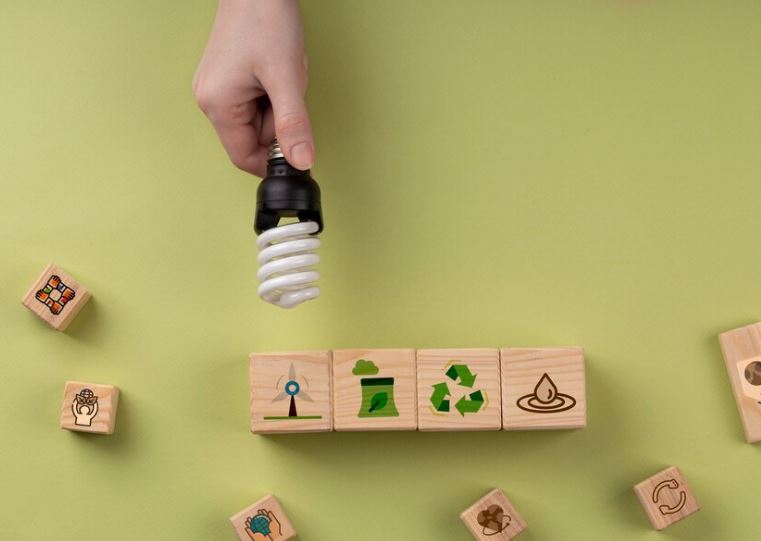It’s more about developing deliberate habits over time than it is about making big gestures to reduce your energy consumption at home. It is comparable to personal finance management in that small changes have a significant impact. You already have the means to reduce energy waste in your home, whether it’s through high-efficiency appliances, controlled thermostats, or smarter lighting. There is a change taking place, and those who are fed up with waste and eager for improvement are supporting it as well as legislators.
The public’s interest in home energy efficiency has consistently increased over the last ten years, especially during times of price instability. Not only did the recent energy crisis draw attention to vulnerabilities, but it also made households reconsider how they relate to consumption. Previously limited to eco-enthusiast forums, low-cost, highly efficient practices are now being adopted by families from Glasgow to Bristol. Consider the emergence of reusable water bottles, which were once a niche product but are now a cultural staple.
Key Ways to Save Energy and Their Impact
| Strategy | Description | Estimated Annual Savings | Source |
|---|---|---|---|
| LED lighting | Uses up to 80% less power than incandescent bulbs and lasts significantly longer | £136 | Energy Saving Trust |
| Home insulation & sealing gaps | Prevents heat loss, especially around windows, floors, and lofts | £80–£500+ | National Grid Group |
| Smart thermostat use | Automates heating and cooling for optimal efficiency | £145 | Octopus Energy |
| Washing at low temps | Washing at 30°C reduces water heating costs without sacrificing cleanliness | £30 | NRDC |
| Reduced shower time | Four-minute showers help save water and the energy needed to heat it | £60 | Energy Saving Trust |
| Unplug standby devices | Stops ‘vampire’ energy drain from appliances left on standby | £45 | Energy Saving Trust |
| Cooking with lids on | Shortens cooking time by conserving heat | £10–£20 | GreenMatch |
| Smart meter adoption | Tracks energy usage in real time, encouraging better decisions | Variable | GOV.UK, OVO Energy |
| Air-drying clothes | Replaces tumble drying with passive drying for clothes | £50 | Energy Saving Trust |
| Water tank insulation | Minimizes heat loss from stored hot water | £40 | Octopus Energy |
Changing to LED lightbulbs might seem like a small adjustment, but it’s a much like switching from a gas-guzzler to a hybrid car—subtle in action, but big in impact. More than 70% less energy is used for illumination when all 30 light outlets in the majority of UK homes are replaced with LEDs. Additionally, its lifetime reduces waste and the need for replacements. Emma Thompson, a well-known advocate of sustainable living, once called these developments “quiet revolutions”—inconspicuous yet revolutionary.
In addition to making winters more comfortable, properly insulating your house is a wise financial decision. Draughts and cold patches became unavoidable during the pandemic as people stayed home more. Upgrades like double glazing and loft insulation reduce the need for heating by trapping warmth. Comparable to layering clothing, each layer retains more heat, resulting in cost and energy savings. According to the UK Green Building Council, insulation can save heating-related emissions by as much as 30%.

Conversely, smart thermostats act more like watchful home managers than straightforward gadgets. These devices pick up on your preferences, look for trends, and modify the heating or cooling as necessary. Homeowners can save up to £145 annually by configuring them to lower output when you’re gone and setting them between 18 and 21°C during the winter. Even though the technology is fairly inexpensive, it will have a significant impact on your energy bill.
The main source of energy consumption in homes is appliances, and there is a broad range in their efficiency. Modern washing machines and dishwashers with an A+++ rating, for example, use a lot less energy than their predecessors. By design, these high-performance devices are incredibly efficient, providing the same output with less demand. Choosing to only wash full loads and at 30°C enhances those benefits. Making greater use of what we already have is more important than merely focusing on kilowatt-hours.
“Phantom” or standby power is another unnoticed source of energy waste. Turned-off but still plugged-in devices continue to suck power silently. It’s like having a leaky tap in terms of energy. Overnight use of Wi-Fi routers, gaming consoles, and televisions can cost households up to £80 annually. These gradual leakage can be stopped by unplugging them or by employing smart power strips. It’s a very logical move that’s becoming more and more popular in tech-conscious households.
Kitchen energy-saving practices have an equally significant impact. Cooking with lids on reduces the amount of time needed for boiling and simmering by retaining heat. Reliance on high-consumption ovens can also be decreased by using slow cookers or pressure cookers, which run at lower energy levels for longer periods of time. These changes are especially helpful in houses with multiple people, where preparing meals is a daily routine and energy usage builds up rapidly.
Another area that is ready for change is bathroom routines, which are frequently disregarded. A typical household in the UK can save about £60 annually by limiting shower time to four minutes. Comfort and efficiency are increased when you combine that with a water heater that is set at 120°F instead of the standard 140°F. It’s the same of reducing the speed on a downward drive in the home—minimum work, maximum effect.
An interactive view into energy consumption is offered by smart meters. You receive real-time feedback that enables a speedier course correction rather than waiting for a monthly charge. This is especially creative in homes with large families or teenagers, where behavioral change is made simpler when it is connected to observable outcomes. Early evidence indicates that residences with smart meters tend to use less energy over time, and government partnerships are already encouraging the adoption of these meters.
Solar energy and other renewable solutions are becoming more and more attractive for individuals who want to go farther. More homes may now afford residential solar panels thanks to a dramatic decrease in installation prices over the last ten years. For both financial and environmental grounds, celebrities such as Cate Blanchett have publicly supported solar investments. Not every house can benefit from a rooftop array, but for those that do, it offers long-term savings and energy resiliency.
Expert energy audits are an additional tactic that provides insightful information. These evaluations pinpoint energy-wasting areas that aren’t readily apparent, such as poorly programmed heating systems or inefficient ductwork. Similar to a physical examination, an audit offers a comprehensive picture that helps homeowners make well-informed plans for improvements. These assessments are now subsidized by some energy providers, making them a wise and especially cost-effective first step for people who aren’t sure where to start.
Energy-conscious living is becoming more and more popular, and this is having an impact on fashion, entertainment, and even housing. Passive solar architecture is becoming popular among designers, and movies like 2040 use narrative to teach viewers about sustainability. Although slow, these cultural changes are creating a new standard in which conserving energy is as much a matter of ethics as it is of economy.
